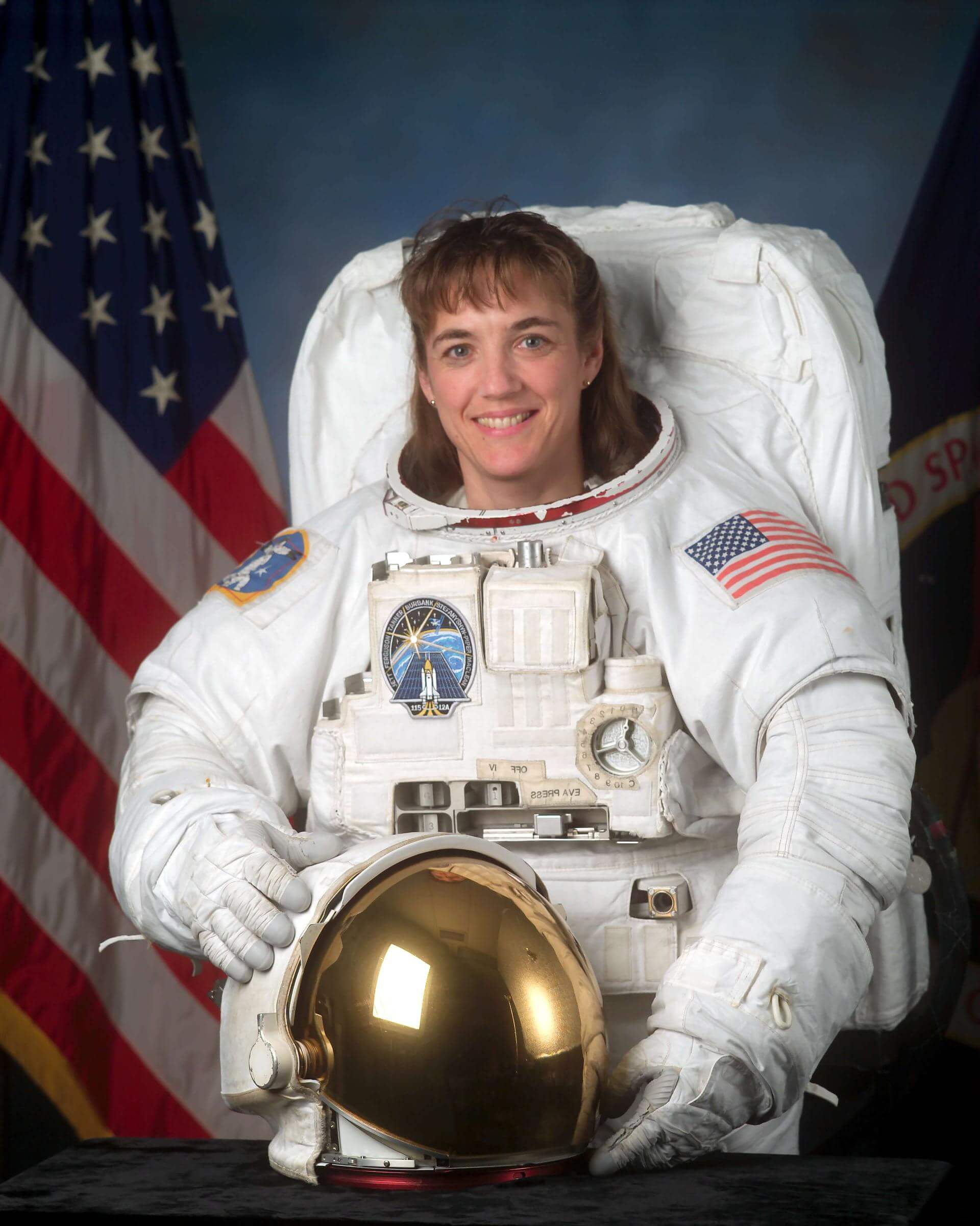Heidemarie Stefanyshyn-Piper
American - (NASA)
Retired
Date of Birth: Feb. 7, 1963
Age: 62
Heidemarie Martha Stefanyshyn-Piper is an American Naval officer, engineer, and a former NASA astronaut. She has achieved the rank of Captain in the United States Navy. She is also a qualified and experienced salvage officer. Her major salvage projects include de-stranding the tanker Exxon Houston off the coast of Barbers Point, on the island of Oahu, Hawaii, and developing the plan for the Peruvian Navy salvage of the Peruvian submarine Pacocha. Stefanyshyn-Piper has received numerous honors and awards, such as the Meritorious Service Medal, two Navy Commendation Medals, and two Navy Achievement Medals. She has flown on two Space Shuttle missions, STS-115 and STS-126, during which she completed five spacewalks totaling 33 hours and 42 minutes. As of 2018, she ranks 39th on the all-time list of space walkers by duration.
Space Shuttle Atlantis / OV-104 | STS-115
National Aeronautics and Space Administration | United States of AmericaKennedy Space Center, FL, USA
Sept. 9, 2006, 3:14 p.m.
Status: Success
Mission:
STS-115 was a Space Shuttle mission to the International Space Station (ISS) flown by Space Shuttle Atlantis. It was the first assembly mission to the ISS after the Columbia disaster, following the two successful Return to Flight missions, STS-114 and STS-121. STS-115 launched from Pad 39-B at the Kennedy Space Center on 9 September 2006 at 11:14:55 EDT (15:14:55 UTC). The mission is also referred to as ISS-12A by the ISS program. The mission delivered the second port-side truss segment (ITS P3/P4), a pair of solar arrays (2A and 4A), and batteries. A total of three spacewalks were performed, during which the crew connected the systems on the installed trusses, prepared them for deployment, and did other maintenance work on the station.
Low Earth OrbitSpace Shuttle Endeavour / OV-105 | STS-126
National Aeronautics and Space Administration | United States of AmericaKennedy Space Center, FL, USA
Nov. 15, 2008, 12:55 a.m.
Status: Success
Mission:
STS-126 was a Space Shuttle mission to the International Space Station (ISS) flown by Space Shuttle Endeavour. The purpose of the mission, referred to as ULF2 by the ISS program, was to deliver equipment and supplies to the station, to service the Solar Alpha Rotary Joints (SARJ), and repair the problem in the starboard SARJ that had limited its use since STS-120.
Low Earth OrbitThe National Aeronautics and Space Administration is an independent agency of the executive branch of the United States federal government responsible for the civilian space program, as well as aeronautics and aerospace research. NASA have many launch facilities but most are inactive. The most commonly used pad will be LC-39B at Kennedy Space Center in Florida.
Long March 3B/E
Fengyun-4C
Launch Complex 2 (LC-2) - Xichang Satellite Launch Center, People's Republic of ChinaChina's geostationary meteorological satellite program FY-4 (Feng Yun 4) is the second generation of chinese geostationary meteorological satellites.
Long March 8A
SatNet LEO Group 17
Commercial LC-1 - Wenchang Space Launch Site, People's Republic of ChinaA batch of 9 Low Earth Orbit communication satellites for the Chinese state owned SatNet constellation operated by the China Satellite Network Group.…
Soyuz 2.1a
Obzor-R No.1
43/4 (43R) - Plesetsk Cosmodrome, Russian FederationNote: Assignment of payloads to this launch is uncertain. The Russian Obzor-R satellite is a planned X-band radar earth observation satellite desi…
LVM-3 (GSLV Mk III)
BlueBird Block 2 #1
Satish Dhawan Space Centre Second Launch Pad - Satish Dhawan Space Centre, IndiaAST SpaceMobile’s Block 2 BlueBird satellites are designed to deliver up to 10 times the bandwidth capacity of the BlueBird Block 1 satellites, requi…
Long March 12A
Demo Flight
Long March 12A Pad - Jiuquan Satellite Launch Center, People's Republic of ChinaFirst test launch of CASC/SAST’s Long March 12A rocket, with a dummy payload. The rocket’s 1st stage attempted to land on a landing pad about 300 km …



